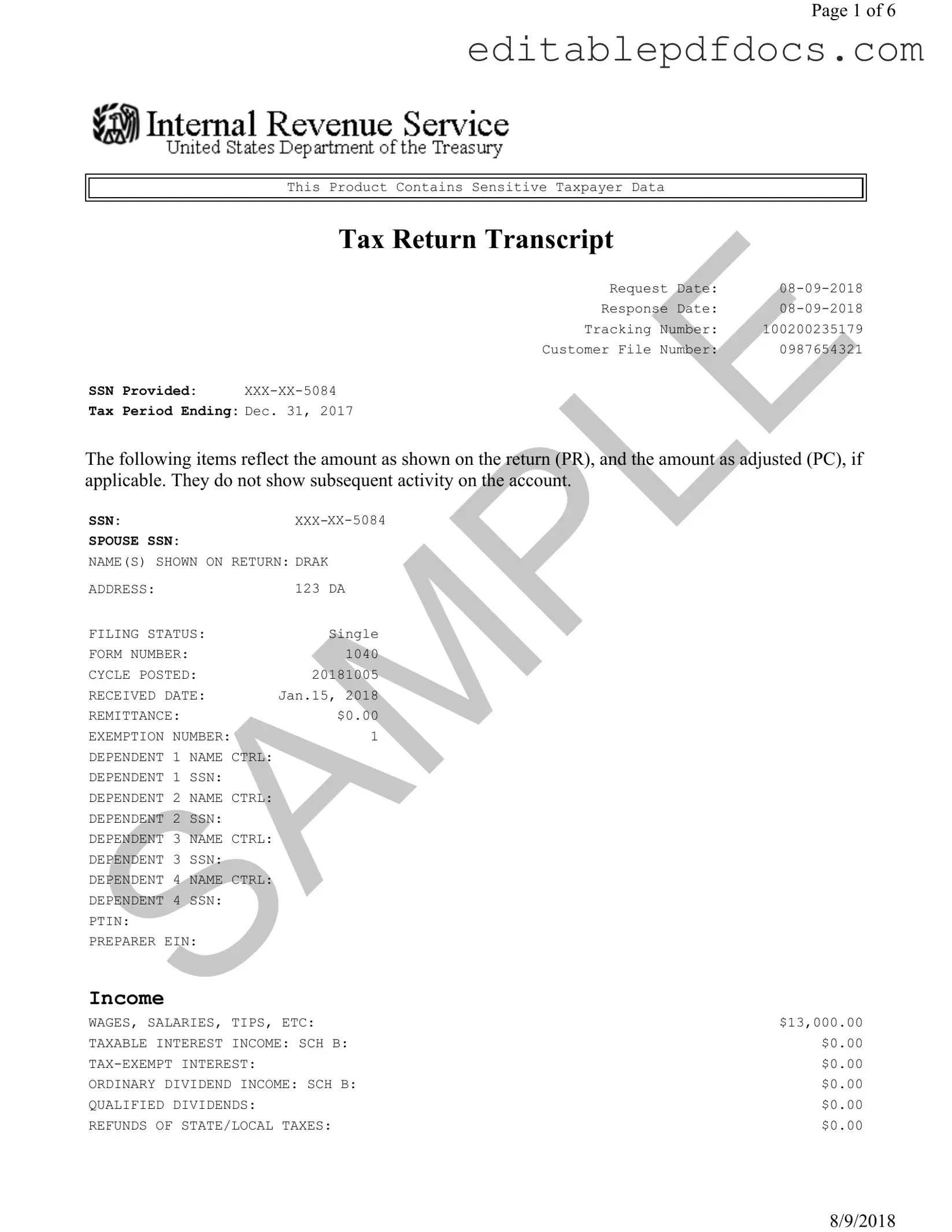The Sample Tax Return Transcript form serves as a crucial document for taxpayers, providing a detailed summary of an individual's tax information as reported to the IRS. This form includes essential data such as the taxpayer's Social Security Number (SSN), filing status, and income details for the specified tax period. For instance, it outlines wages, salaries, and other income sources, along with adjustments to income, resulting in the adjusted gross income. Additionally, the form highlights tax liabilities, including tentative taxes and any credits applied, such as the Earned Income Credit. It also details payments made, including federal income tax withheld and any amounts owed or refunds due. Importantly, this transcript does not reflect any subsequent account activity, making it a snapshot of the taxpayer's financial situation for the given year. Overall, the Sample Tax Return Transcript is an essential tool for individuals seeking to verify their tax information, apply for loans, or address any discrepancies with the IRS.
